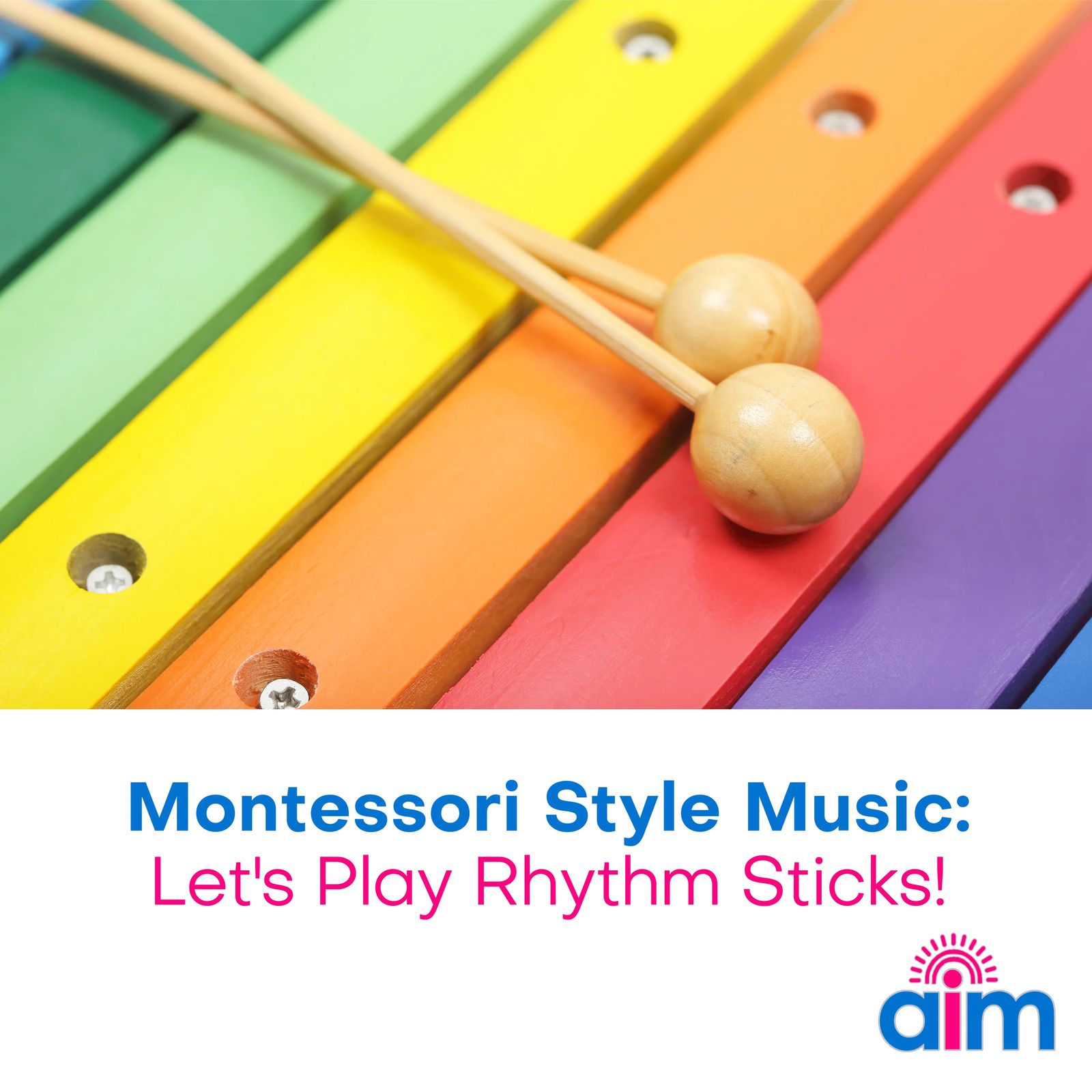Montessori Style Music: Let's Play Rhythm Sticks!
Written by Carolyn Lucento
If you think these "sticks" are just for tapping, here are some little surprises for you!

Just about every early childhood setting has rhythm sticks for the children to play at music time, and they are the “cat’s meow” as far as I am concerned.
Firstly, each child has two sticks, one for each hand. (Always a good thing to engage both hands when making music.)
Next, rhythm sticks are inexpensive so you can supply a pair for each child in the group. (Also a good thing for each child to have the exact same instrument to play.)
What I like most about rhythm sticks is their versatility: they can be played in so many different ways! Just to mention a few:
- Tapping together
- Scraping across each other
- Tapping end to end
- Tapping one like a hammer and the other held vertical to the floor (like a nail)
- Tapping on the floor like drum sticks
- One stick held up to the shoulder and the other scraped across it (like playing a violin)
- Both held vertically and clapped together (like playing cymbals)
- Lots of variations on the above (ex: play them like a cello as a variation on the “violin way” mentioned above)
Rhythm sticks can also be held silently to the side in the musical “rest” position (not playing). The rest is an important element in music education.
When introducing rhythm sticks for the first time, you can use a modified version of the 3 Period Lesson. As the teacher, I show the children how to hold them, rest them, and play them before I give each child their own rhythm sticks.
First Period: Say, “These are called rhythm sticks.” I also like to have the children repeat the name along with me. Then say, “Here is one way to play them.” I usually show simple tapping first.
Second Period: You can play around a little here since you are only working with one instrument (as opposed to 2 or 3.) Say: “Are these called drum sticks or rhythm sticks?” Or: “Are these called chop sticks or rhythm sticks?” Or: “Am I playing my rhythm sticks or am I resting them?”
Third Period: Say, “What are these called?” For older children, you can elaborate by telling the children that rhythm sticks are percussion instruments, usually called “claves.” Here’s more information on teaching through the Montessori Method.
For younger children, I only use the shorter rhythm sticks with a natural wood finish. My all-time favorites are the sets with one smooth stick and one that has ridges. You can find these on Amazon.
Playing rhythm sticks is an excellent activity for developing the muscles in the hand that are important for writing.
Practicing keeping a steady beat is just about the most important skill to develop as a musician.
Playing “Echo Games” in which the teacher makes a rhythm and then the children copy, offers a playful experience with patterns that helps develop skills in listening, memory, and coordination.
You can play your rhythm sticks along with any song that your children love to sing. Or put on some fun music that goes along with your curriculum (ex: African drumming) and have fun jamming!
Carolyn Lucento has been a Montessori teacher/administrator since 1981, and currently teaches music in 32 Montessori preschool classrooms each week. She also teaches Montessori Music, Movement, Art & Outdoor Classroom workshops in two AMS Training Programs in the San Francisco Bay Area. She writes on these topics at her blog: Magical Movement Company.blogspot.com




















